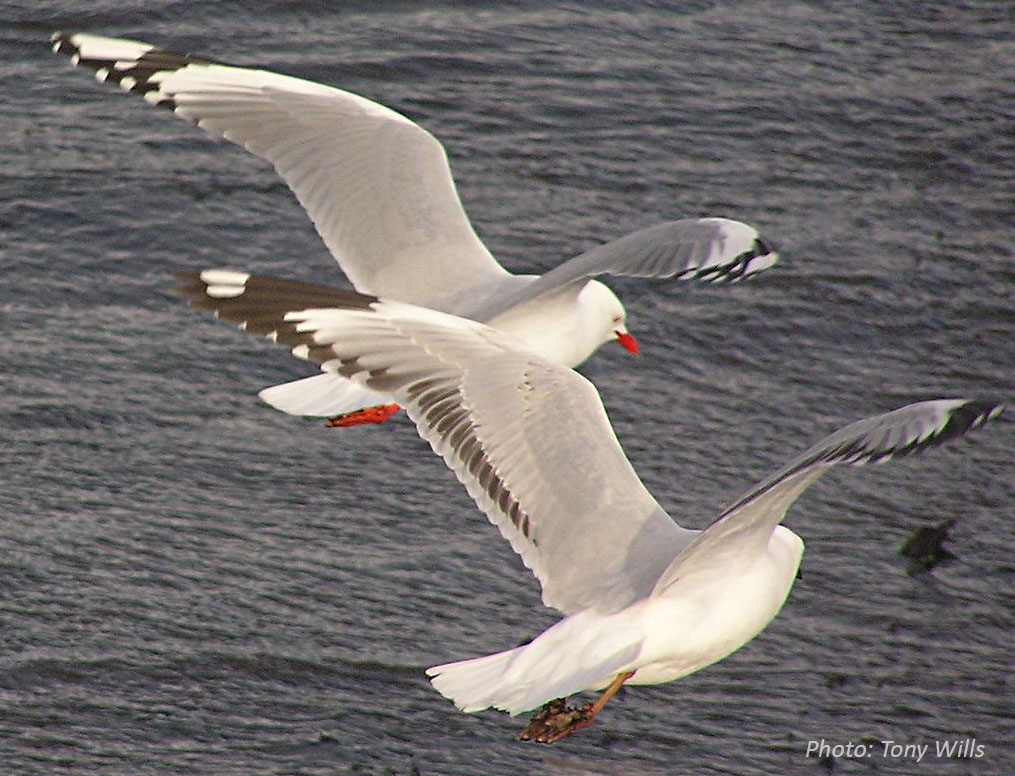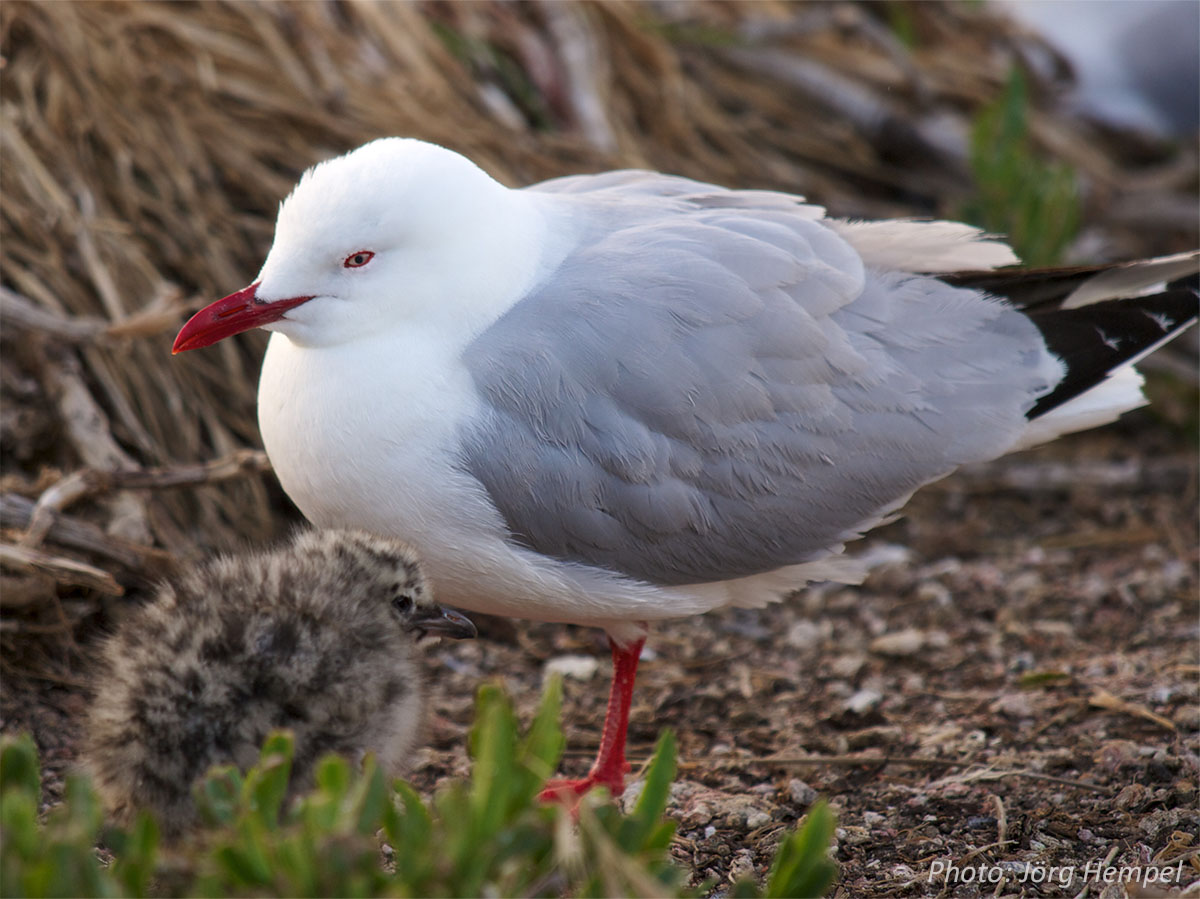Red-billed gull | tarāpunga
Status: Declining

The commonest gull in New Zealand, recently the numbers of red-billed gull | tarāpunga have markedly declined. Mostly seen on coastal margins including braided river hapua (coastal lagoons) and estuaries, they breed in colonies. They are sometimes seen inland along braided river margins.
“A 41-year record of the endemic red-billed gull (Larus novaehollandiae scopulinus, a medium-sized inshore feeder on krill) shows that its breeding success is positively related to krill abundance, which is, in turn, positively related to the La Niña (or positive phase of the ENSO cycle) when winter conditions are stable, and upwelling associated with northeasterly winds in late spring (Mills et al. 2008). Recent changes in the PDO and El Niño (negative) phase ENSO events led to a more than 50% decline in red-billed gulls between 1983 and 2003.”
Description
The red-billed gull (Larus novaehollandiae) is also known as the silver gull, tarāpunga, tarapunga (Māori), mackerel gull, Jackie (Chathams), akiaki, seagull, and redbilled gull. A medium-sized gull, it’s larger than the black-billed gull, measuring 37cm and weighing 240-320grams. Juveniles are commonly confused with black-billed gulls, as the colouring and size is similar.
It is genetically different from red-billed ‘seagulls’ found elsewhere in the world, including SE Australia.
A white gull with grey wings, the beaks, feet, and eyelids are bright red-orange in mature adults. The main flight feathers are black with white tips. Juveniles have brown patches on their wings and back, and darker brown legs, bill, and iris.

More information
Research and references
Conservation efforts
While numbers are declining, no species-specific conservation projects are currently underway.
- National Red-billed Gull Survey 2014-2016: ‘Among the many factors potentially adversely influencing the red-billed gull population, predation and disturbance at breeding colonies, although prevalent, may be less important than changes in food availability offshore during the breeding season.‘
- Predator control on the Otago Peninsular resulted in a 6-10% increase in a population that had declined by almost 51% nationwide, from 1983-1994.
